- Why make the Camino one of your New Year’s goals?
- Embarking on the Camino, a New Year’s goal for both experienced and novice pilgrims
- The French Way, the most legendary route
- Explore the beauty of the Portuguese Way
- A wild adventure on the Northern Way
- The Jacobean essence of the Primitive Way
- The English Way, the smallest of the Jacobean family
- Crossing Spain through the Vía de la Plata
- The final destination, the Finisterre and Muxía Way
- Get on the Way and transform your life with your New Year’s resolutions
For the next 365 days, you’ve likely set your New Year’s goals to improve your life. We all have new concerns, resolutions, objectives, and challenges to tackle in the upcoming twelve months. What if you set making the Camino de Santiago as one of them? This historic pilgrimage is more than just a trip or a vacation; it’s also a spiritual and emotional adventure.
Why embark on the Camino? What are the existing routes and their unique characteristics? Besides the physical benefits it offers as a hiking activity, the Camino de Santiago will enable you to experience unique intangible values that will transform your life.
Why make the Camino one of your New Year’s goals?
Making the Camino de Santiago one of your New Year’s goals is a great purpose, considering all the good it can bring you. The Camino provides you with the perfect time and place to contemplate your past, present, and future. It’s like “meta-painting,” a painting within another: by walking the Camino, you can reflect on all those other resolutions and goals you wish to fulfill during this year.
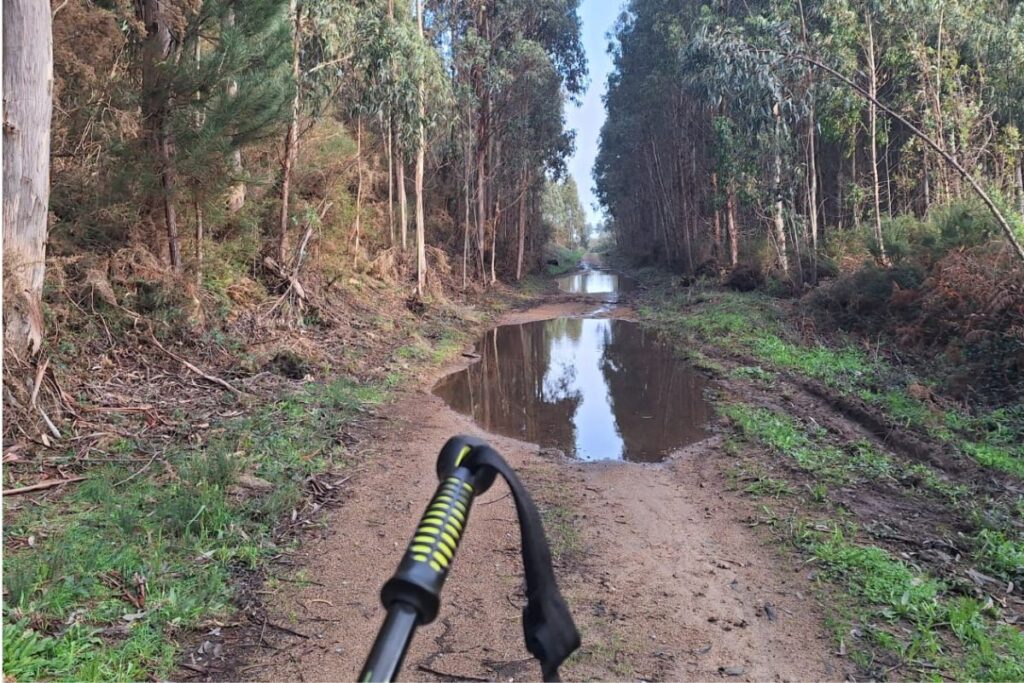
Nothing can stop you from achieving your goals and resolutions
Walking any of the Jacobean routes will lead you to a place of self-discovery. Beyond the physical exercise, it’s an opportunity to reflect and connect with people from all around the world. You can walk alone and rediscover yourself, or enrich your experience by sharing thoughts, knowledge, and new ideas with other pilgrims. The Camino, as a New Year’s goal and purpose, helps bring clarity, allowing you to clear your mind and perhaps get to know yourself better.
Embarking on the Camino, a New Year’s goal for both experienced and novice pilgrims
If you’ve already completed some Jacobean routes and are an experienced pilgrim, maybe your New Year’s resolution is to walk a Camino you haven’t explored yet. On the other hand, if you’re a beginner, walking a Jacobean route should be on your list of new resolutions for the coming year.
If one of your New Year’s goals is to walk the Camino for the first time, we want to assist you with our ultimate guide for beginner pilgrims. In it, we will provide you with information on the best time to go, the physical and mental preparation you’ll need, what to pack in your backpack, and other tips. And then, as a teaser, we will talk about the main routes.
The French Way, the most legendary route
The French Way is the most famous, popular, and traveled of all the Jacobean trails. This route bears witness to the birth of Spain and Europe, a true history book and testimony to the origins of many cities, towns, and legends. Starting in Spain from Roncesvalles, you can discover different regions of the northern half of the Iberian Peninsula, with their varied landscapes and historic towns filled with welcoming people. You can walk the entire route or in sections, like the last 100 kilometers from Sarria. If embarking on a pilgrimage is one of your New Year’s goals and purposes, this route is ideal, suitable for everyone, and equipped with many services.
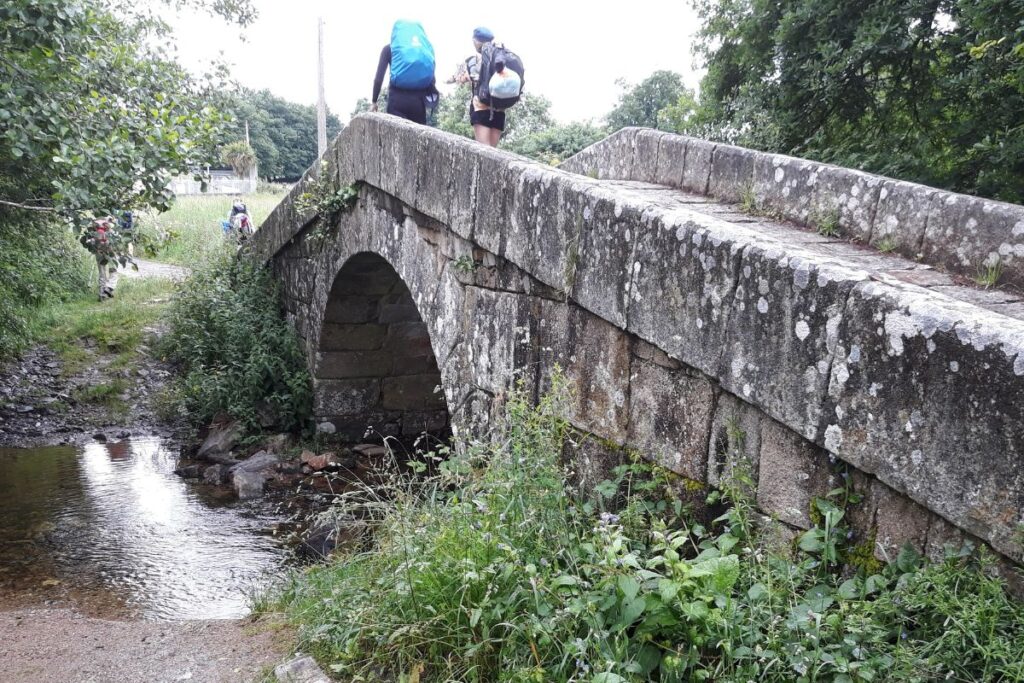
Pilgrims fulfilling one of their goals, walking the French Way
Explore the beauty of the Portuguese Way
The Portuguese Way allows you to explore the beauty of Portugal and Spain simultaneously. This historical route, the second most popular, crosses the interior of Portuguese lands and also offers a coastal variant along the Atlantic Ocean. Starting in Lisbon, you will traverse part of the ancient Roman road XIX, enjoying cities steeped in history, beautiful coasts, beaches, rivers, and vineyards. You can walk it in its entirety or in sections, such as the last 100 kilometers from Tui. Alternatively, if you prefer the Coastal variant, you can cover the last 100 kilometers from A Guarda. Like the French route, it’s an easily achievable goal, as it boasts many services and is not demanding in terms of elevation.
A wild adventure on the Northern Way
For those who love the wild side of nature, the Northern Way is a very special option. This route, with a rich history, offers spectacular views of the Cantabrian Sea, passing through lush forests, idyllic beaches, and rugged cliffs. Starting in Irún, it is a bit more physically demanding than the previously mentioned routes. However, its beauty and tranquility make it a highly attractive choice. If you want to experience it, set yourself the challenge of completing the entire route or savor it by walking the last 100 kilometers from Vilalba, in the heart of Galicia.
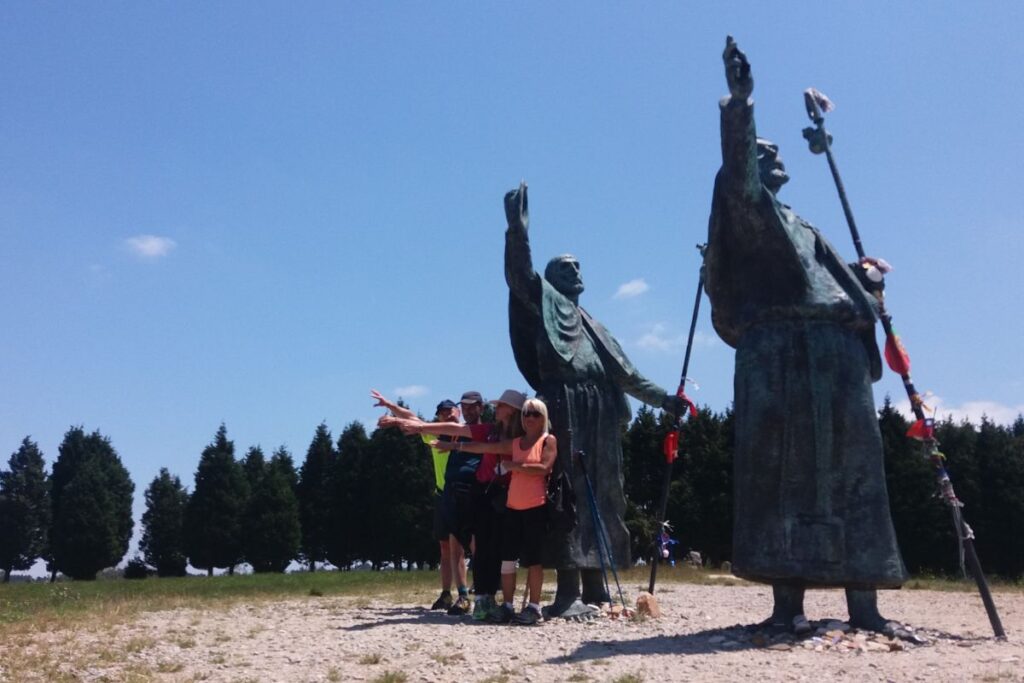
Pilgrims on the Northern Way at Monte do Gozo, reaching their destination
The Jacobean essence of the Primitive Way
The Primitive Way, known for being the oldest route, offers a journey filled with challenges but also rewards. Crossing the mountains between Asturias and Galicia, this route is ideal if you’re looking for a more rustic, less crowded, and highly challenging experience. Starting in the city of Oviedo, its natural beauty and rich history make it an unforgettable Camino. Following in the footsteps of the first pilgrim in history, King Alfonso IX, you will transition from high peaks to bucolic Galician meadows. Dare to explore it by completing the last 100 kilometers from Lugo: who knows, the Camino is addictive, and after overcoming this challenge, you might want to do the whole thing.
The English Way, the smallest of the Jacobean family
The English Way is another historical and very unique route. It originated as a maritime shortcut taken by medieval pilgrims from the British Islands and northern Europe to reach Galicia by boat. Furthermore, it is the shortest Camino in its entirety and only crosses one Spanish province. As if that weren’t enough, it has two possible starting points: the city of A Coruña and the city of Ferrol, from where we recommend beginning this English route. A combination of estuaries, forests, and meadows will accompany you to Santiago de Compostela, your New Year’s goal.
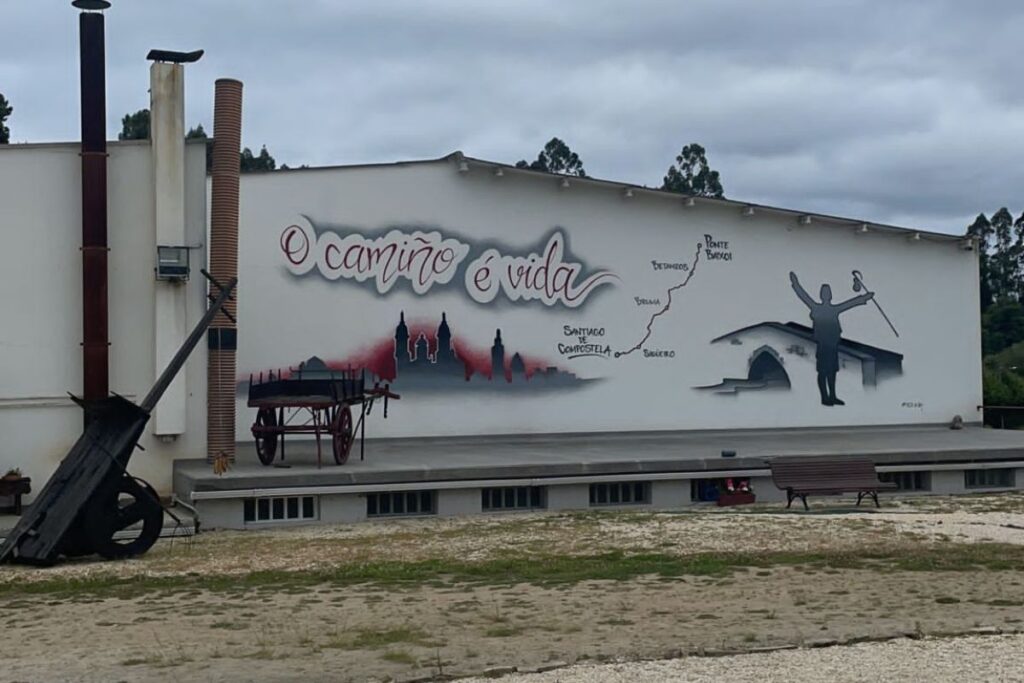
On the English Way from Ferrol, you’ll discover that the Camino is life
Crossing Spain through the Vía de la Plata
The Vía de la Plata (or Silver Route) is a historic route that offers a full spectrum of Spanish landscapes from south to north. This Camino, less traveled, is perfect if you’re looking for a more solitary and reflective experience. Along the route, which follows the path of the Roman road built between Mérida and Astorga, you’ll discover the rich history of Spain. This Jacobean Way starts today in Seville and crosses various regions of Spain. When it reaches Astorga, it connects with the French Way, but in the province of Zamora, you can choose the variant known as the Sanabrian Way. You can walk the entire route or just a section, like the last 100 kilometers from Ourense.
The final destination, the Finisterre and Muxía Way
And finally, for this New Year, you can reach the ultimate destination of all the Jacobean routes, the Finisterre and Muxía Way. This route starts at the Plaza del Obradoiro and takes you through the interior of the province of A Coruña to the Roman Finis Terrae, the Cape of Finisterre. At the end of this adventure, when you reach its legendary lighthouse, you’ll arrive at kilometer 0 of all the Ways, the goal of every pilgrim.
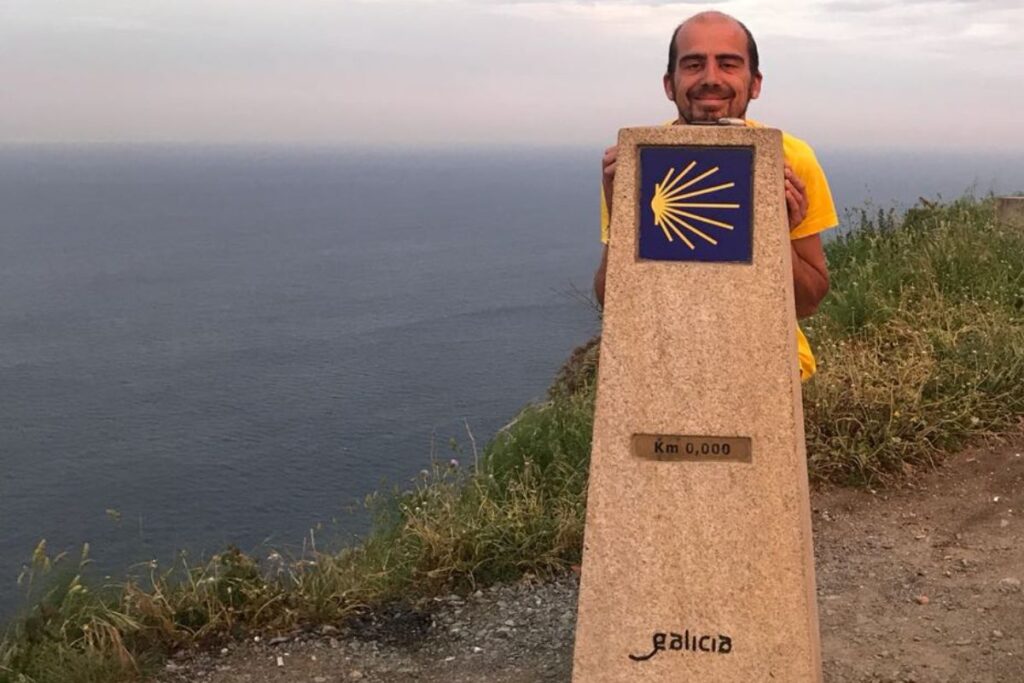
A happy pilgrim after achieving one of his New Year’s goals: reaching kilometer 0 on the Finisterre Way
Get on the Way and transform your life with your New Year’s resolutions
The Camino de Santiago is a powerful tool for achieving your New Year’s goals and resolutions. As the saying goes, the goal is not just Santiago but the Camino itself. On the Way, you can reflect on other goals you have for the next 365 days. The Camino de Santiago provides the perfect setting and a unique opportunity to establish clear and achievable priorities.
As a catalyst for change, the Camino de Santiago inspires you to adopt a more active, mindful, and connected lifestyle. So why not make the Camino one of your main goals and resolutions for this New Year? Embark on this journey, transform your life, and make this year full of achievements and personal growth. Buen Camino and Happy New Year!

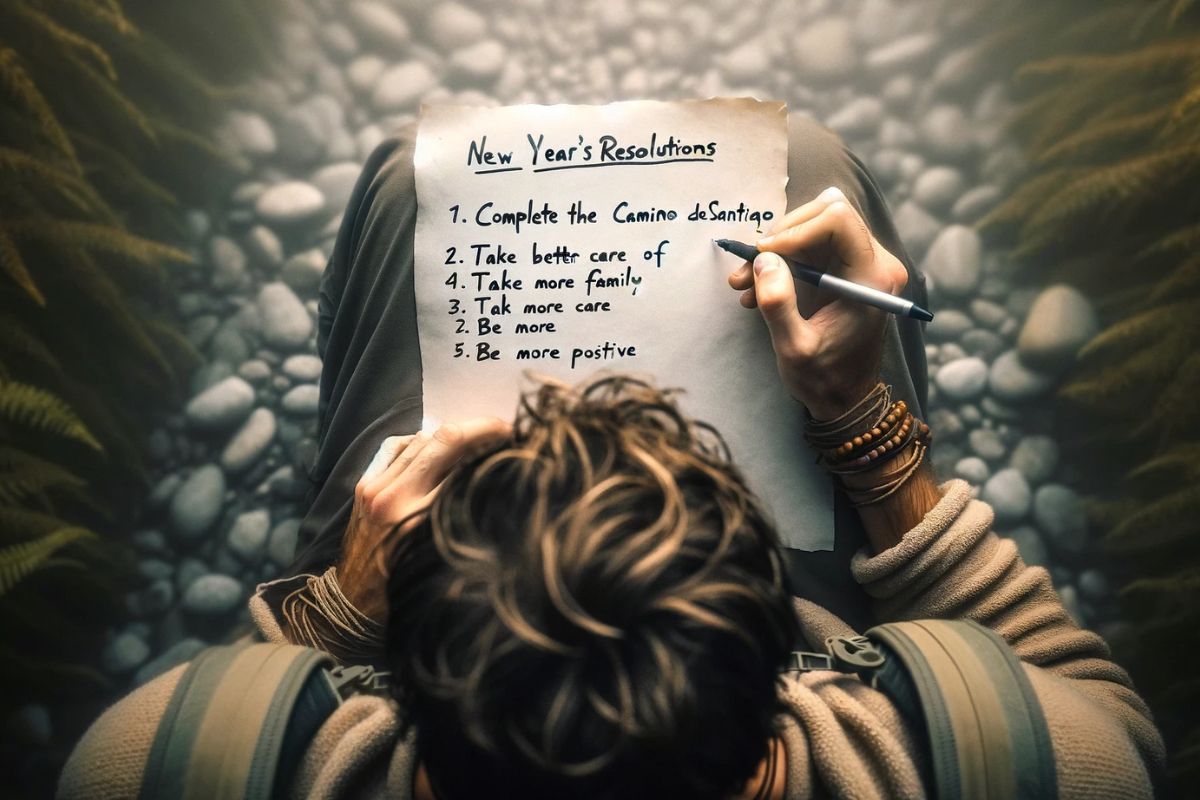










Leave A Comment